Couch To 5K Running Plan: How To Run 5km For Beginners
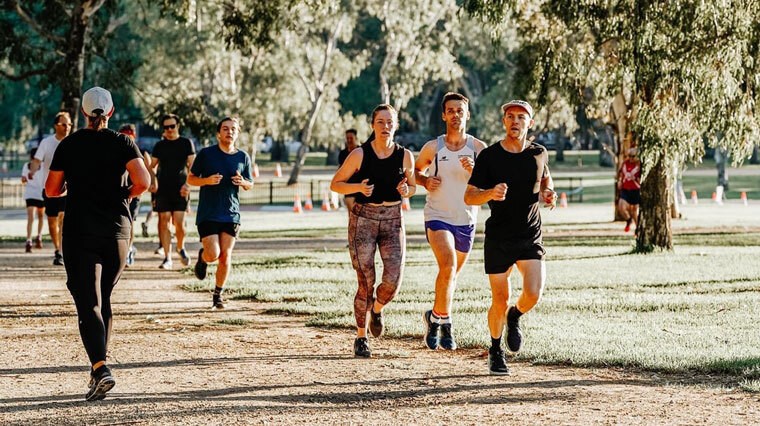
The 'Couch To 5K' running plan is the ideal starting point to set out on your running journey.
Whether you're dreaming of running a half marathon, committing to running to help lose weight or to boost your mood and mental health, a 5km training plan can help make your running goals a reality.
As running coach and Sportitude Store Manager Shaun O'Callaghan said;
"The challenge is always starting and getting through the first month... but getting past that first month or so, on the other side it's beautiful and that is where the enjoyment is."
In this blog, Shaun (leading above) shares his expertise and insight on how to go from non-runner to runner with his Couch to 5K in 6 weeks running program, and answers commonly asked questions to support your success as a 5K runner.
Everything you need to tackle your Couch to 5K running plan is right here - with beginner-friendly advice on motivation, gear, recovery and nutrition. This can set the foundations to confidently build your endurance, overall fitness and mental resilience in the weeks ahead.
Shaun's 5km training plan is designed to be accessible to beginner runners as well as anyone looking to make a return to running. But before we get into the nitty-gritty details with Shaun, we'll dive into the background and benefits of the Couch to 5K training plan to inspire you to lace up and get into running.
What Is Couch To 5K? When Did Couch To 5K Start?
The Couch to 5K training plan (also known as the C25K program) originated in the mid-90s, after American Josh Clark had discovered the positive benefits of running on his own mental and physical health. He wanted to support and inspire his mother who was in her 50s to break out of a sedentary lifestyle without the intimidation the sport can present to non-runners.
Offering a gentle transition into running was the secret formula which Josh Clark shared on his website in the form of a structured 9-week training plan in 1996, that included 3 training sessions per week and rest days. It inspired total beginners to lace up and enjoy the benefits of running sooner rather than later without feelings of disheartenment holding them back.
Rather than focusing on running as a 'fix' to health issues, the Couch to 5K training plan offered a brighter perspective - with an emphasis on movement as a celebration and as an empowering activity that was bountiful in positive benefits.
No pain, no pain was Josh Clark's motto - leaving the traditional no pain, no gain mantra in history in preference for a training plan that was sustainable and encouraged steady success.
The 5km training plan was more about running based on perceived effort and time over speed, and nurtured the philosophy that a runner is anyone that is willing to lace up and give it a go.
Does Couch To 5K Work?
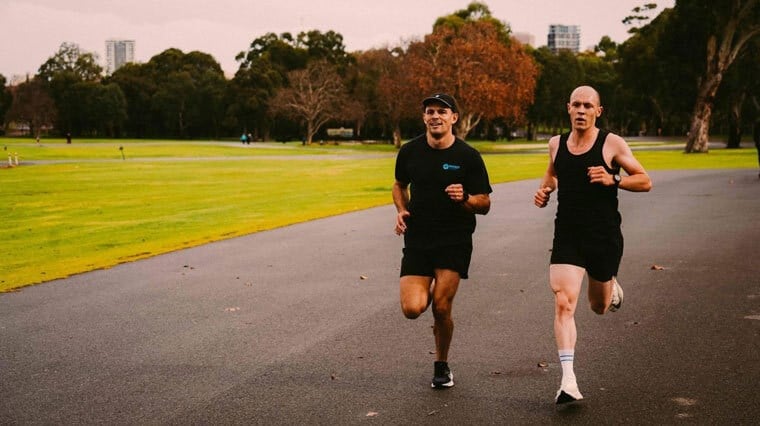
Yes, the Couch to 5K training plan can be life-changing. For decades, it’s been helping runners of all ages and abilities gradually and safely transition into running and commit to it as their healthy habit – setting the foundations of an active lifestyle and cultivating a healthy self-esteem.
Millions of new runners have benefited, and the Couch to 5K training plan itself has been given a new life with modern iterations adapted by running coaches across the globe including Adelaide's Shaun O'Callaghan (on the right, above), and even created in the form of a free Couch to 5K app.
The beauty of this 5K training plan is that it's adaptable to fit your goals. No matter the direction or distance you want to take your running journey, Couch to 5K is ideal for getting over that first hurdle when lack of self-confidence or lack of motivation can be emotionally paralysing.
The Couch to 5K running plan helps build confidence in new runners, lifting the burden of feeling intimidated or overwhelmed when lacing up in running shoes for the first time. It also helps bust the myth of running as an impossible and painful chore by making it more accessible – breaking your sessions down into realistic and attainable smart goals week-to-week that can help fuel your motivation.
Is Couch To 5K Good For Beginners?
For many new runners, the 5K running goal is just-right – equivalent to 5,000 metres or 3.1 miles. It’s long enough to offer a worthy challenge and boost your motivation and short enough to be attainable and provide self-gratification with each session. In fact, every training run should be celebrated – even if it’s a ‘bad run’, because it’s helping build mental resilience and strengthen your heart, lungs and muscles to adapt to an increased training load.
Simply the act of running regularly will naturally increase your fitness and make you a better runner, but having a structured training plan can help guide you. The temptation for many new runners can be to follow an all-or-nothing attitude. You may try to run at maximum speed on your first run to ‘catch up’ on where you want to be in your physical fitness, however this can lead to burning out and self-doubt.
The risk of taking on a more epic challenge too soon, like running a half marathon, marathon or ultramarathon is less about whether or not you’re capable, but more about the emotionally daunting prospect making your running goal feel out of reach. Of course with commitment, training and a positive mindset you can tick these items off your bucket list – but every marathon begins with the first stride, and for you that could be a 5K training plan
Am I Too Old Or Too Unfit To Do Couch To 5K?
No - not even a little bit! The Couch to 5K training plan is designed for you. Whether it's Couch to 5K for beginners or Couch to 5K for over 60s, you can find your footing here.
No matter your age or fitness, the Couch to 5K running program makes running accessible to everyone and can help nurture an optimistic outlook - proving that your doubts don't define you.
Walking is a major part of the 5km running program. As the plan progresses the goal is to gradually integrate longer running intervals into your sessions, until you’re jogging/running the 5K comfortably and confidently with fewer walking breaks.
By alternating between walking and running, this 5km running program makes running less intimidating, more accessible and for many, more enjoyable no matter your fitness level.
Please check with your doctor or healthcare professional if you have any concerns, health issues, injuries or are pregnant before beginning a new training program. They can assist you to modify the 5K training plan to suit your personal requirements.
Is Couch To 5K Hard?
A little bit of soreness and discomfort in running is normal at first as your body adapts to its new-found potential. With patience and persistence, you'll be able to maintain a steady pace at less effort, but please consult your healthcare professional if you have any concerns about pain.
Consistency is key. Once you flow into a Couch to 5K routine, running will feel easier and more natural, and you may even dream of running in your sleep with the sense of freedom and empowerment it cultivates.
The difficulty of running is often more mental than physical, but the act of running itself can help strengthen your mental toolkit - to grow your resilience, build confidence and shift your perspective to see obstacles as challenges you can overcome.
If the term running doesn’t resonate with you, you can use Couch to 5K to develop a brisker pace for a 5km walk which also has numerous benefits to your mental and physical health. As a pressure-free way for beginners to get into running, Couch to 5K isn’t about setting a specific speed, although you can integrate this in your training plan down the track if desired.
What To Do When You've Finished Couch To 5K
Couch to 5K can be used as a stepping stone to commit to running or brisk walking for mind and body wellness, running 5km without stopping, training for a 5k race or to give yourself the motivation you need to become a parkrun regular or to maintain your fitness now and in the future.
Some 5K runners may go on to chase running milestones like a half marathon, marathon or ultramarathon - taking on a 'Couch to 5K to 10K' or 'Couch to 5K to Half Marathon' training plan.
Others enjoy repeating the 5km training plan with a focus on becoming a faster runner, while even more may commit to running regularly purely to support their mental health, physical fitness and overall self-care. Running can be a form of moving meditation to provide an outlet to work through emotions, boost mood, stimulate creativity or unwind from a busy lifestyle.
Whether you run on the road, trail, track or treadmill, the 5km training plan is really whatever you want it to be. Your motivation behind it and where you go from here should be something that resonates with you.
Shaun O’ Callaghan On How To Run A 5K
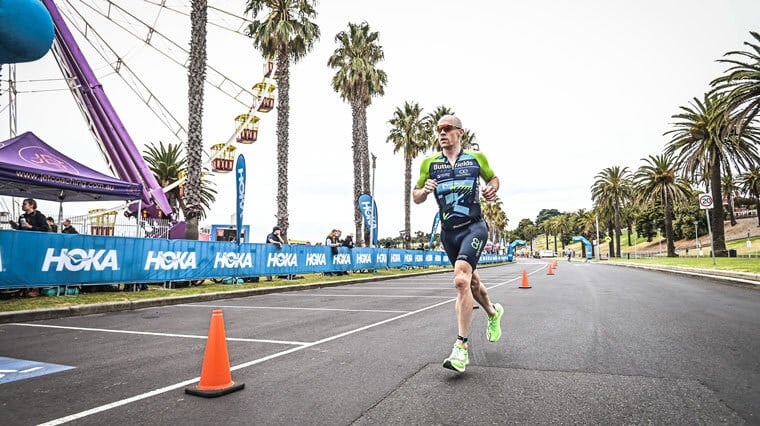
Meet Shaun O'Callaghan - a cyclist turned runner, marathoner, ultra-marathoner and triathlete, with a passion for endurance sports. Shaun is proud of giving back to his community by sharing his in-depth knowledge based on both personal experience in these sports and a keen interest in sports science.
No goal is too small or too big - Shaun has provided his tailored coaching services to everyone from beginners wanting to take their first steps in running, to elite athletes seeking to shed seconds off their personal best.
From strengthening your mental toolkit, to managing your training load Shaun's holistic approach to coaching can help you navigate the challenges of running and embrace the rewards.
Below, Shaun shares insight into his running background, his Couch to 5k free advice and 5K training plan to support your running journey from beginner to everyday athlete and beyond.
Want to know more about this inspirational athlete and his coaching programs? Connect with Shaun through his website at https://www.shaunocallaghan.com/.
About Shaun O’ Callaghan
1. Who Is Shaun O’Callaghan? Can you please share some insight into your background as an athlete/runner and your experiences as a running coach?
Shaun O’Callaghan is a lifelong athlete, from 12 years old and the following 15 odd years I have worked with a coach more or less every day of my life. Beginning as a committed cyclist from 12-24 I travelled the country representing my home state of Victoria and later on moving to a semi-professional cycling team winning national championships along the way.
A challenge between my father and I sparked a passion for running, reliving his times of yester-year and not to mention I love a challenge, I ran my first marathon off no training, 2hrs 52min 39s, advantage me. It was exhilarating to be the only person you could rely on, out there doing your best, a race against the clock. It was honest and fair, no outside influences, no ability to lay blame on anyone else, it’s you against a stopwatch. There’s something really beautiful I found in that. From there after the weeks of DOMS I actually began to use running as training and it was great.
As far as coaching it all began with myself, I adopted the same theories that I learned from my previous cycling coaches and applied them to my running. From there, I was asked more and more often to coach or write programs for run clubs or athletes wanting to do a 10K, half or full marathon or other event.
Being a part of someone’s journey to achieving something that was only ever once a thought, hope or dream is what continues to drive me each day.
2. Why do you love to run and why did you first get into running?
My running journey, however, began as I was finding myself short on time for a 3hr bike ride every other day but wanting to challenge myself and get a sweat on. This is what started that fateful conversation with my father around running, triathlons and the like. There are many reasons why I love running; day to day there’s something meditative about running and not to mention it's so time efficient compared to going for a bike ride. I love going for a trail run and getting to be amongst the nature, not to mention the amount of challenges you can undertake, whether a fast 5km or a ultramarathon through some very tough terrains.
3. Do you have any challenges or highlights in your running journey you’d like to share to inspire new runners?
The challenge is always starting and getting through the first month, there aren’t many people I know or that I’ve met that have been a good runner from the jump. The first month is always the hardest as the body starts to get used to this new-found activity, but getting past that first month or so, on the other side it's beautiful and that is where the enjoyment is.
Couch To 5K Training Plan: Essential Tips For Beginners
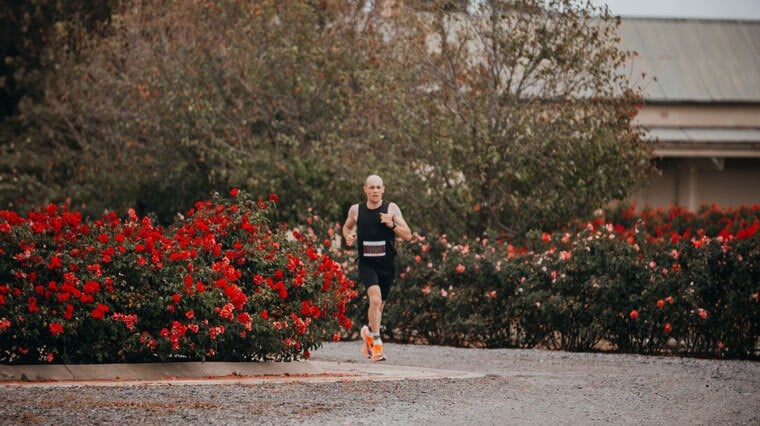
4. What are the benefits of a 5K training plan for new runners?
There are many reasons, namely accountability, following a guide is the ability to commit to something and see it through, a well-throughout plan can empower you to achieve your goals and prepare you for bigger and better things. A plan can also keep you grounded so that you don’t increase your training load too much, potentially causing injury/illness.
5. What type of running shoes are best for new runners and why? What would you suggest to a beginner running with their everyday sneakers, or taking a deep dive into the world of carbon plated running shoes?
The best type for someone getting into running is the one that feels most comfortable and supportive. Also you should treat these shoes as your running only shoes, this will mean they last a lot longer and you know that when you’re putting them on it’s time to go running.
As for buying new running shoes, personally I would go to your nearest ‘speciality running’ store and have a chat with someone experienced, even better if you’re able to test the shoes on a treadmill before buying. Running shoes have changed a lot, never more drastically than in the last 5 years, you do not need a ‘you-beaut’ carbon plated racing shoe that all the marathon runners wear to get started. Sometimes you can even end up doing more damage than good as a lot of these shoes lack the support needed for running every day.
6. What gear do you recommend for new runners to stay motivated when starting a 5K training plan and why?
If you can, go buy yourself a new set of running kit to go with your new shoes, always best to feel comfortable and confident when you’re going out running. If new threads aren't your jam, headphones are a good option, I always love to sing along (even if not in-tune) to pass the time and especially on easy runs (I use singing to make sure that I’m running easy enough), if you can't sing maybe you're running too fast.
7. How do I know whether I have the fitness to start the 'Couch to 5K' training plan?
For me ‘Couch to 5K’ is 50/50 mental & physical. Physically, we’re starting from zero, a good program should assume there is zero fitness and therefore build slowly and gradually. Also a 6 week ‘Couch to 5K’ doesn’t mean you have to complete it in 6 weeks, its okay to repeat week 1 a few times to build up to a level of confidence where you feel comfortable to continue progressing.
I believe that there is a ‘Why’ behind reading this blog, wanting to do a 5km run, everything. Understanding ‘Why’ you want to do ‘Couch to 5K’ will help on those days when you're not feeling it, or the moments when running feels hard.
8. Is it OK to take walking breaks while running? What benefits does the run-walk method have to new or returning runners?
Of course it's okay to take walking breaks! Elite athletes take walking and standing breaks, ON PURPOSE! The run-walk method is beneficial to building fitness regardless of your running ability, not only beginners but all the way through your running adventure.
9. Is pain a normal part of running and is it OK to push through the pain? When will running get easier?
As you begin your running journey there may be some pains and soreness that arise, some are good pains and some aren’t. Firstly, DOMS, most of us have heard of this before, ‘Delayed Onset Muscular Soreness’. A very common feeling after your first few runs or harder workouts, DOMS usually hits around 24-48hrs post workout. There are a few ways we can combat DOMS, active recovery after a hard workout (walking), stretching or foam rolling affected areas (although there is very little research to say this actually works and its more placebo than functional), recovery techniques like hot or cold therapy (sauna, warm bath, ice baths, cryotherapy etc.).
Other common kinds of pains and soreness can be bone, joint, muscle or tendon related, all of which you’re often able to run through if you alter your load and paces but I would only do this under the advice of a physiotherapy professional or coach.
10. Many runners love to do exactly that – run! However, integrating cross-training into a running routine has multiple benefits to improve running performance - from building strength, flexibility and endurance to keeping your routine invigorating and aiding in injury prevention. What are your top cross-training tips and suggestions to support new runners?
Cross-training is so beneficial to building tissue tolerance and strength, it mainly benefits injury prevention when starting out. I always suggest seeing a physiotherapist who’s able to assess any asymmetries in your movement patterns. Running is a unilateral exercise where asymmetries can be exacerbated over time due to its repetitive nature.
Best advice I can give is to safely squat, deadlift and calf raise 2-3 times a week, doing so at a slow tempo.
11. How many weeks of training does it take for a non-runner to go from Couch to 5K?
Everyone starts a ‘Couch to 5K’ program with different levels of fitness, someone may be hiking 20km every weekend, while someone else may not even reach 5,000 steps a day. For someone who approaches this program with a base level of fitness, I would see them completing a 5K non-stop in 3-6 weeks. Someone who lives a rather sedentary lifestyle could complete a ‘Couch to 5K’ program in 5-10 weeks.
12. What is a good 5K run time for a beginner runner?
A 5km time for someone who is getting into running for the first time can vary so much! I’ve met many people whose first 5km was run in 40-45min. I believe that instead, first focus on completing the distance regardless of time and then once you have an idea of how long a 5k can take you, go through another round of the ‘Couch to 5K’ program and see how your time improves.
How To Run 5km: Recovery & Nutrition

13. How should runners stretch pre- and post-run, and why is warming up and cooling down a critical part of any training plan?
I’m a big advocate for pre-run exercises, less so static stretching, more so activation and dynamic movements. The idea of static vs dynamic stretching pre-exercise has many people on different sides of the fence, in this case I’d suggest doing your own research and working with your preferences, do some static stretching before you exercise and compare how that feels to a day when you do some dynamic stretching.
As for post-run stretching, I tend to walk in the last few hundred metres of my run to let the body cool down and relax as I finish. I would recommend getting some food and fluid in to the body within the 30mins after exercise, especially after a hard session and then stretching once fed and clean so you don’t feel like you need to rush through this process. Dynamic or static stretching is fine to do at this point in time, this allows you to focus on any particular muscle groups that are needing any particular attention.
When static stretching the idea is to release tightness as opposed to gaining extreme amounts of flexibility, stretch to a point that feels like an end to range of motion and hold, allowing the muscles to release and slowly gain length as opposed to forcing yourself into discomfort.
14. How important is everyday nutrition to support a runner on the 5K training plan? What are your top suggestions for pre- and post-run meals and hydration to meet energy and recovery demands?
As you begin to increase the amount you’re exercising, there should be a small amount more attention paid to nutrition as it becomes more important to make sure you’re getting enough food and nutrition into your system. In saying this beginning a ‘Couch to 5K’ program can also be a nice bookmark for large healthy eating changes, but this shouldn’t mean restricting nutrient intake.
My top suggestions for pre-run is something light, I like to do crumpets with jam or toast with peanut butter and honey. On a hot day or a run that can be a bit longer >45min I sometimes like to take some water with me.
Post-run I want to drink something with some electrolytes, minimum 500-750ml over the hour post-run. At the same time I look to get in some carbs, proteins and fats. The perfect post-run meal for me is eggs and beans on toast or some variation of this as you get some of those 3 macronutrients in as soon as possible.
15. Why is prioritising recovery an important part of every training plan, and what are your top recovery tips for new runners?
I always like to remember that you can only improve as much as you can recover. It’s almost more important to recover well than it is to train harder. Eating healthy and getting enough good quality sleep are the two major pillars to performance. Getting 8+ hours of sleep per night and eating a balanced diet that covers your increased energy expenditure is more important than running an extra day per week.
On top of this, listening to your body is very important. When exercising I believe you get a better understanding of how your body operates and you gain a greater ability to listen to what your body needs. There will be days where you’re a little sorer than usual, or you begin to feel a niggle coming on stranger than usual. These are great moments to get on the front foot, take a day off or change your run to a walk. Understanding when to take a break is pivotal to avoid burnout, no point doing an extra training session if it means that you aren’t able to make it to the start line.
16. A busy lifestyle can stop many people from engaging in a physical activity like running. What are your top tips on how to juggle training, work, family and social commitments to make running a sustainable part of a healthy lifestyle?
Balance is key, I don’t believe that running should come at the expense of everything else in life. However, there are always little sacrifices to make when introducing an activity like running into your schedule. I believe that if you want to truly engage in a ‘Couch to 5K’ program, make running more of your priority, find some time in your day and put it in your diary. Alternatively combine your running with some socialisation, meet a friend and go for a run together when possible. Two birds, one stone?! How good!
Shaun O'Callaghan's Couch To 5K In 6 Weeks Running Plan
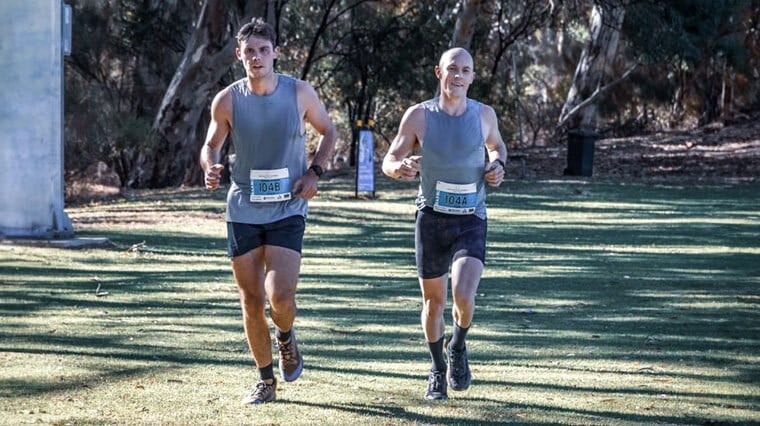
With these commonly asked 5km running plan questions answered, running coach Shaun O'Callaghan (on the right, above) dives into his 5km running program for beginners. This training plan is adaptable to meet your fitness levels and running goals.
Even though it's a 6 week Couch to 5K running program, this number is a guide. It's encouraged that you complete the running plan at your own pace - meaning repeating weeks where necessary until you feel comfortable and confident to move onto the next stage of the 5K training plan.
Strength and conditioning days are a critical part of the training plan for injury prevention - avoiding overloading key muscles used in running, while strengthening underworked muscles.
Rest days are not only recommended but essential, keeping in mind that recovery is a vital element in any training plan. Your recovery strategies allow your muscles to repair, mind to rejuvenate and to support a gradual build-up of fitness. Light activity may be performed on rest days, but with a recovery focus.
Happy running!
Week 1
Monday: Easy Run 1min, walk 2min, repeat 10 times.
Tuesday: Strength & Conditioning
Wednesday: Rest Day
Thursday: Easy Run 2min, walk 3min, repeat 5 times.
Friday: Strength & Conditioning
Saturday: Easy Run 1min, walk 1min, repeat 10 times.
Sunday: 20min Walk
Week 2
Monday: Easy Run 1:30min, walk 1min, repeat 10 times.
Tuesday: Strength & Conditioning
Wednesday: Rest Day
Thursday: Easy Run 1min, walk 1min, repeat 10 times.
Friday: Strength & Conditioning
Saturday: Easy Run 2min, walk 3min, repeat 5 times.
Sunday: 25min Walk
Week 3
Monday: Easy Run 2min, walk 1min, repeat 8 times.
Tuesday: Strength & Conditioning
Wednesday: Rest Day
Thursday: 5 x 30sec Easy Run/1min Walk -> 5 x 30sec Hard Run/2min Walk -> 5min Walk
Friday: Strength & Conditioning
Saturday: Easy Run 2min, walk 3min, repeat 5 times.
Sunday: 30min Walk
Week 4
Monday: Easy Run 2min, walk 0:30min, repeat 10 times.
Tuesday: Strength & Conditioning
Wednesday: Rest Day
Thursday: 5 x 30sec Easy Run/1min Walk -> 10 x 30sec Hard Run/1min Walk -> 5min Easy Run
Friday: Strength & Conditioning
Saturday: Easy Run 1min, walk 1min, repeat 15 times.
Sunday: 40min Walk
Week 5
Monday: Easy Run 3min, walk 1min, repeat 7 times.
Tuesday: Strength & Conditioning
Wednesday: Rest Day
Thursday: 5min Easy Run -> 5 x 1min Hard Run/2min Walk -> 5min Easy Run
Friday: Strength & Conditioning
Saturday: Easy Run 1min, walk 1min, repeat 20 times.
Sunday: 5min Walk -> 4 x 5min Easy Run/1min walk -> 5min Walk
Week 6
Monday: 7 x 4min Easy Run/1min Walk
Tuesday: Strength & Conditioning
Wednesday: Rest Day
Thursday: 4 x 8min Easy Run/2min Walk
Friday: Strength & Conditioning
Saturday: Rest Day
Sunday: 5K Run
Strength & Conditioning Workout
Squat: 3 sets x 10 reps
Forward & Reverse Lunge: 3 sets x 10 reps per leg
Step Up: 3 sets x 10 reps per leg
Side Plank: 3 sets x 20-30 sec per side
Single Leg Glute Bridge: 3 sets x 10 reps per side
Important Links
Find out more about running coach Shaun O'Callaghan and his training programs at his website: https://www.shaunocallaghan.com/.
Follow Sportitude Running at:
Instagram: sportitude.running
If you like this, you'll love:
What Is Parkrun? The Running Phenomenon You'll Love To Be A Part Of
12 Half Marathon Training Tips For Beginners
Jess Stenson On Goal Setting & Marathon Training As A Mum
